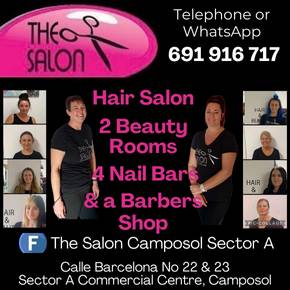The Casa de Guevara has become one of the most popular tourist attractions in Lorca
There has been great interest in this palatial home in Lorca since it reopened to the public in February
 After a long and costly restoration project, the Casa de Guevara in Lorca was finally reopened to the public earlier this year in all its splendour, and according to Councillor Santiago Parra the effort and the wait have been worthwhile, to judge from the interest being shown in this magnificent building by both locals and visitors.
After a long and costly restoration project, the Casa de Guevara in Lorca was finally reopened to the public earlier this year in all its splendour, and according to Councillor Santiago Parra the effort and the wait have been worthwhile, to judge from the interest being shown in this magnificent building by both locals and visitors.
Sr Parra explains that the “Casa de las Columnas” (as it is sometimes referred to) is constantly receiving visitors every day, despite the heat of summer, as people are keen to see for themselves the opulent rooms which were lived in without interruption for over 300 years. The main doorway on the façade, with its baroque Solomonic columns, remains the most popular scene for a selfie, but those entering the palatial residence are equally keen to see the living quarters which were closed to the public for so long and to hear about some of the mysteries surrounding those who lived there.
 The motto which is inscribed over the coat of arms on the main façade is “Potius mori quam foedari” (Death before Dishonour), reflecting the aristocratic attitudes of Juan De Guevara and his distant relationship with the Monarchs of Navarra.
The motto which is inscribed over the coat of arms on the main façade is “Potius mori quam foedari” (Death before Dishonour), reflecting the aristocratic attitudes of Juan De Guevara and his distant relationship with the Monarchs of Navarra.
Meanwhile, during the summer those who visit the yellow ballroom, the red living-room, the green drawing-room and the magnificent staircase of the Casa de Guevara are being presented with a small fan in recognition of their effort in braving the heat of August, and among those taking advantage has been Inmaculada Jiménez, the editor of Harper´s Bazaar Spain and creative director of Hearst Spain. With visiting times available both morning and afternoon, you can easily follow in her footsteps and those of the illustrious Guevara family over the centuries by booking online: click for details here!
 In all, the furniture items belonging to the Casa de Guevara number some 790, of which 250 are directly related to the building having been declared an Item of Cultural Interest, and the portrait collection includes members of the Puxmarín, Basecourt, Musso, Roca de Togores, Moreno Rocafull and Harmsen families as well as paintings by Senén Vila, Vicente Rodés, Agustín Esteve, José de la Revilla, Manuel de Ojeda, Federico y Luis de Madrazo and Lorenzo Pericás.
In all, the furniture items belonging to the Casa de Guevara number some 790, of which 250 are directly related to the building having been declared an Item of Cultural Interest, and the portrait collection includes members of the Puxmarín, Basecourt, Musso, Roca de Togores, Moreno Rocafull and Harmsen families as well as paintings by Senén Vila, Vicente Rodés, Agustín Esteve, José de la Revilla, Manuel de Ojeda, Federico y Luis de Madrazo and Lorenzo Pericás.
For more local news, events and visiting information go to the home page of Lorca Today.
Oficina de Turismo de Lorca

The rich and extensive history of Lorca has left a legacy of archaeological sites, and historic buildings, around which the modern city has built its tourism industry. Among these are Lorca Castle, the Jewish quarter of the castle and synagogue, Plaza de España, Colegiata de San Patricio, Museo de Arqueologico Municipal, Iglesia de San Francisco, Casa Huerto Ruano, Palacio de Guevara, Iglesia de San Mateo, Pósito de los Panaderos, Convento Virgen de las Huertas, Antiguo Convento de la Merced, Iglesia del Carmen and the Teatro Guerra.
 Unfortunately Lorca has also been prone to natural disaster, suffering a Gota Fría on September 28th 2012, as well as two earthquakes measuring 5.3 and 5.5 on the Richter scale on 11th May 2011, claiming 9 lives. Since this earthquake the city has been rebuilding, winning recognition for its Lorca, Open for Restoration initiative, which used the restoration of the city as a tourist attraction whilst it rebuilt its historical buildings, some of which are currently still not open.
Unfortunately Lorca has also been prone to natural disaster, suffering a Gota Fría on September 28th 2012, as well as two earthquakes measuring 5.3 and 5.5 on the Richter scale on 11th May 2011, claiming 9 lives. Since this earthquake the city has been rebuilding, winning recognition for its Lorca, Open for Restoration initiative, which used the restoration of the city as a tourist attraction whilst it rebuilt its historical buildings, some of which are currently still not open.
The tourist office relocated for 14 years to Calle San Patricio, near the church, but has now returned to its former premises alongside the Palacio de Guevara in the Plaza Concha Sandoval, or Plaza de la Bordadora (click for map).
Lorca also has an area of coastline incorporating the Parque Regional de Cabo Cope - Puntas de Calnegre, in the Sierra de Almenara, which includes the beaches of Puntas de Calnegre, Baño de las Mujeres, San Pedro, El Siscal, Cala Honda, Cuartel del Ciscar, Junquera, Cala de la Gruta, Cala Leña, Los Hierros, Cala Blanca and Playa Larga, although many are accessible only along difficult tracks or by boat!

However, in spite of its many attractions, the name of Lorca is synonymous with Easter, (Semana Santa) its biblical parades of International Tourist Interest status and famous throughout Spain. The week includes a series of processions in which the Whites (Paso Blanco) and Blues (Paso Azúl) try to outdo each other with the magnificence of their embroideries and the skill and daring of their horsemen.
Lorca also has a Parador hotel, located within the historic castle.
Opening hours for Lorca tourist office:
Every day of the year apart from 1st and 6th January and 25th December, 10.00 to 14.00 and 16.30 to 18.30 (except Sunday afternoons).
These opening times are often extended and other information points created during the Semana Santa celebrations.
For more local news, events and visiting information go to the home page of Lorca Today



































